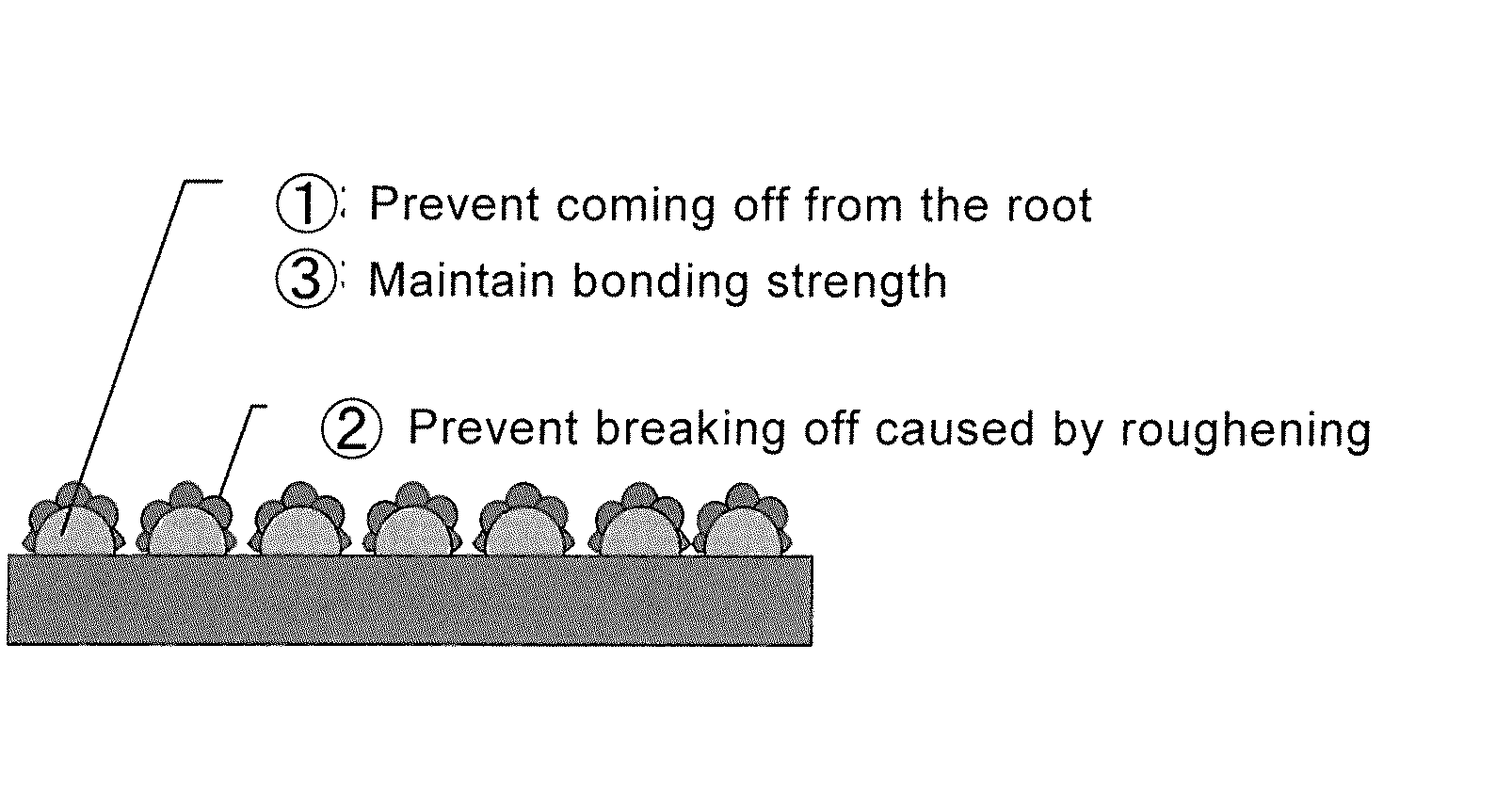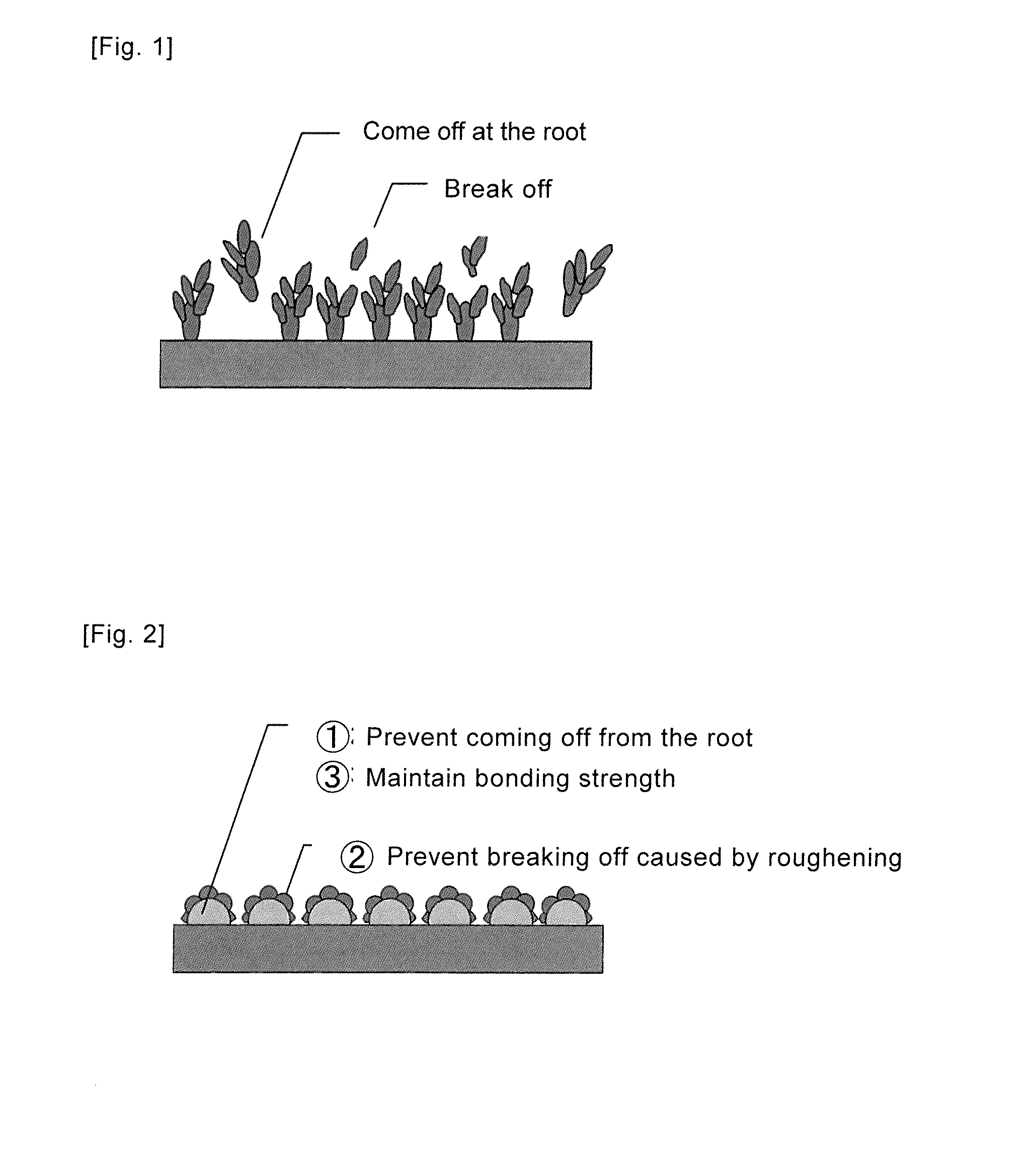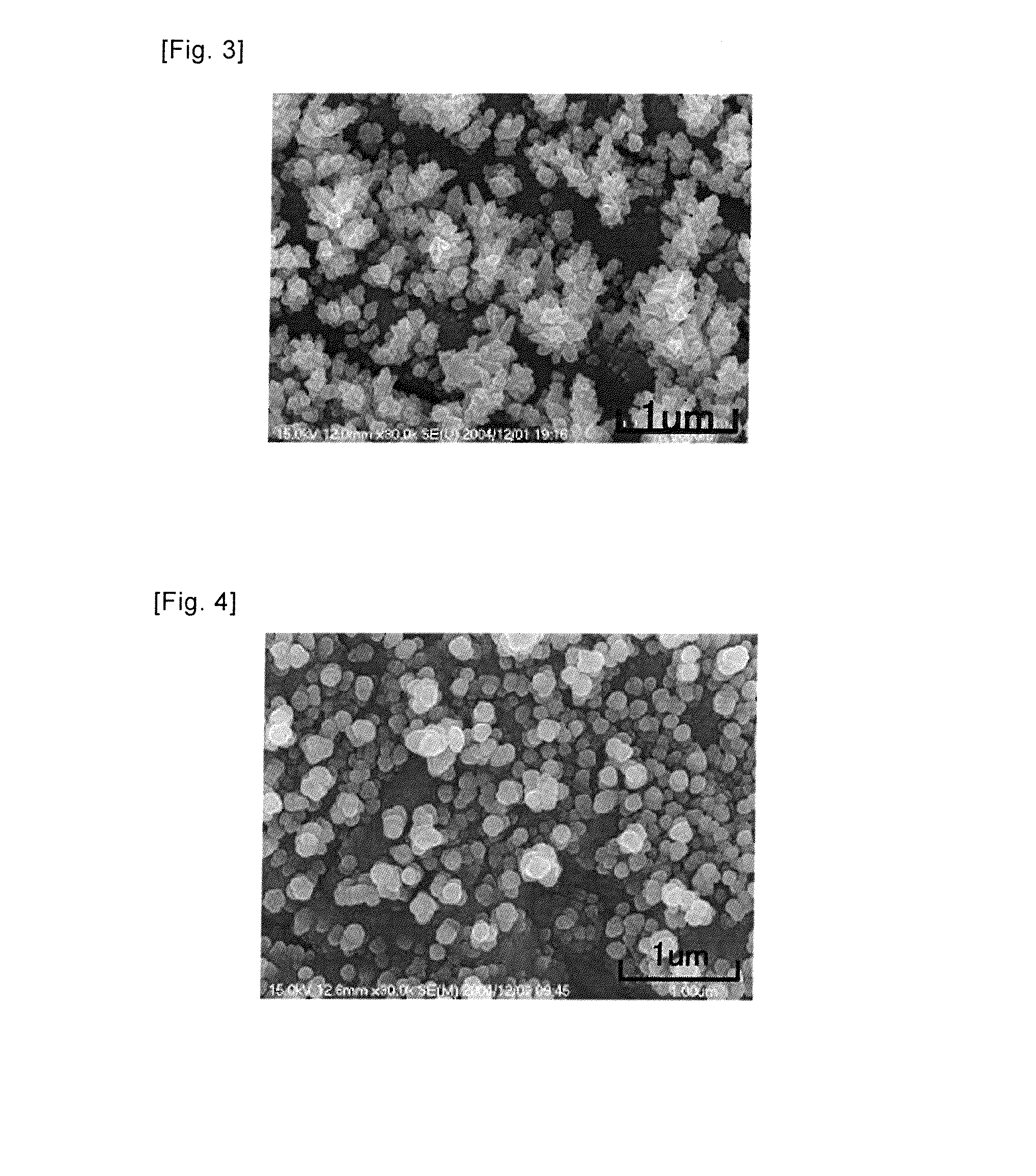Copper Foil for Printed Circuit
- Summary
- Abstract
- Description
- Claims
- Application Information
AI Technical Summary
Benefits of technology
Problems solved by technology
Method used
Image
Examples
example 1 to example 9
[0106]A primary particle layer (Cu) and a secondary particle layer (copper-cobalt-nickel alloy plating) were formed on rolled copper foil under the conditions and ranges shown below.
[0107]Bath compositions and the plating conditions used herein are as follows.
[Bath Compositions and Plating Conditions]
(A) Formation of a Primary Particle Layer (Cu Plating)
[0108]Solution composition: 15 g / L of copper, 75 g / L of sulfuric acid
[0109]Solution temperature: 35° C.
[0110]Current density: 2 to 58 A / dm2
[0111]Coulomb: 8 to 81 As / dm2
(B) Formation of a Secondary Particle Layer (Cu—Co—Ni Alloy Plating)
[0112]Solution composition: 15 g / L of copper, 8 g / L of nickel, 8 g / L of cobalt
[0113]pH: 2
[0114]Solution temperature: 40° C.
[0115]Current density: 24 to 31 A / dm2
[0116]Coulomb: 34 to 44 As / dm2
PUM
| Property | Measurement | Unit |
|---|---|---|
| Length | aaaaa | aaaaa |
| Length | aaaaa | aaaaa |
| Linear density | aaaaa | aaaaa |
Abstract
Description
Claims
Application Information
 Login to View More
Login to View More - R&D
- Intellectual Property
- Life Sciences
- Materials
- Tech Scout
- Unparalleled Data Quality
- Higher Quality Content
- 60% Fewer Hallucinations
Browse by: Latest US Patents, China's latest patents, Technical Efficacy Thesaurus, Application Domain, Technology Topic, Popular Technical Reports.
© 2025 PatSnap. All rights reserved.Legal|Privacy policy|Modern Slavery Act Transparency Statement|Sitemap|About US| Contact US: help@patsnap.com



